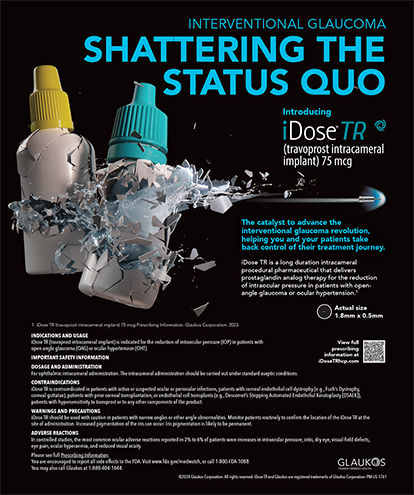The right reason to adopt a new technology is that you are excited about its medical potential and its benefits for your patients. Unfortunately, many surgeons adopt new technologies for the wrong reasons. They may want to get a jump on their competition, they may want to avoid their competition's getting a jump on them, or they may think that offering new technology will increase the profile of their practice and bring patients through the door. For those of you who are considering adding a new technology for the wrong reasons, I can offer some advice.
WHEN TO INCORPORATE A NEW TECHNOLOGY
For a new technology to help your practice, (1) it should solve an unsolved problem, (2) that problem should affect a large number of people, and (3) the technology should work. The excimer laser is one of those rare technologies that solved an unsolved problem (how to correct myopia accurately without glasses) that affected millions of people and actually worked. Early adopters of this technology found patients flocking to their offices.
Laser cataract surgery addresses a large population and works beautifully, but it does not solve an unsolved problem, because standard cataract surgery already works great. I perform laser cataract surgery, but it has attracted very few new patients to my office.
Intacs corneal implants (Addition Technology, Inc.) addressed an issue for a large demographic (the correction of myopia without glasses), and they worked (sort of). They did not solve an unsolved problem, however, because the excimer laser had already solved it. Conductive keratoplasty and laser thermokeratoplasty (LTK) addressed an unsolved problem (presbyopia) that affects millions of people, but these technologies did not work. Early adopters of these technologies spent a lot of money on equipment that turned out to be useful only as doorstops.
HOW DO YOU ANTICIPATE SUCCESS?
It is hard to judge ahead of time if a technology will work. The manufacturer always claims that it works fantastically. To find out how well a technology truly performs, you need to wait until physicians who are not affiliated with the company are using it and then find out if they think that it works, too. That is why it is often best to be the second or third surgeon in your area to adopt a new technology: the early adopters will have tried it before you have made the financial and time commitments. Unless the technology meets all three criteria mentioned previously, your competitors are not getting a practice-building advantage.
There is no harm in waiting. If the technology turns out to be a dud, you will have saved yourself time and money. If the technology turns out to be successful, you will just copy the early adopters and be off to the races.
CONCLUSION
If you make the mistake of being an early adopter of a technology that does not work, quit early. Usually, poor results are a sign that the technology is faulty. If you are obtaining poor results, manufacturers will often blame your surgical technique, but usually it is the technology itself. Although I mistakenly became an early adopter of Intacs and conductive keratoplasty, I partially redeemed myself by being the first person in America to quit using them.
Another tip is to look at how a product has performed overseas, where it has usually been approved well before the United States. I avoided adopting LTK, because by the time it was approved in the United States, my overseas colleagues had stopped using their units. Perhaps early adopters of LTK in the United States thought that American corneas would respond differently to LTK than Canadian ones. That turned out not to be the case.
Robert K. Maloney, MD, is the director of the Maloney Vision Institute in Los Angeles. He is a consultant to Abbott Medical Optics Inc. Dr. Maloney may be reached at (310) 208- 3937; info@maloneyvision.com.


